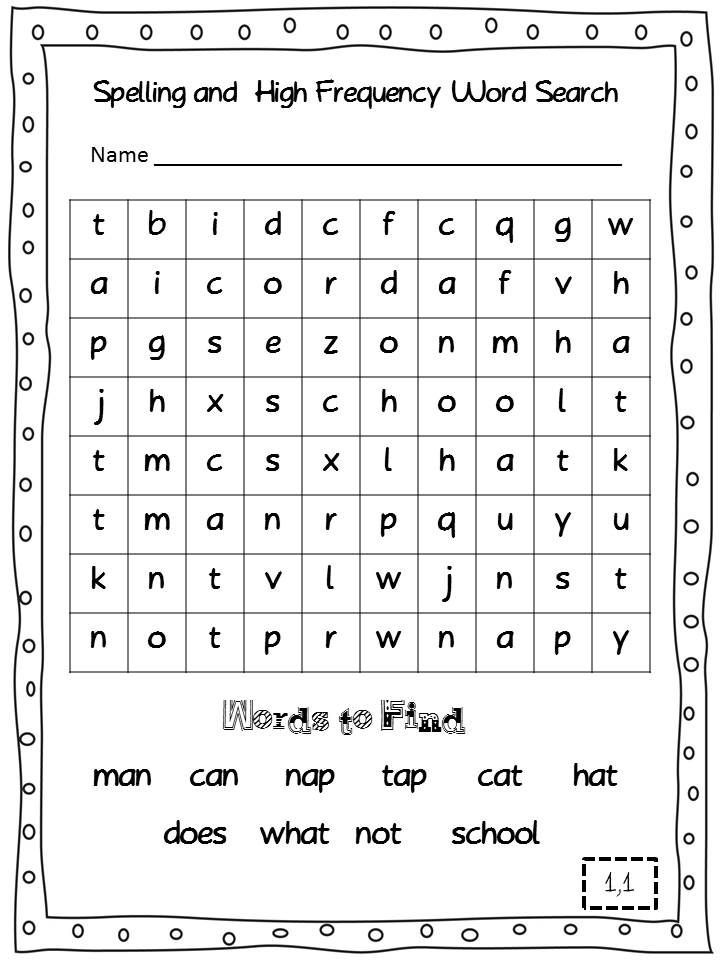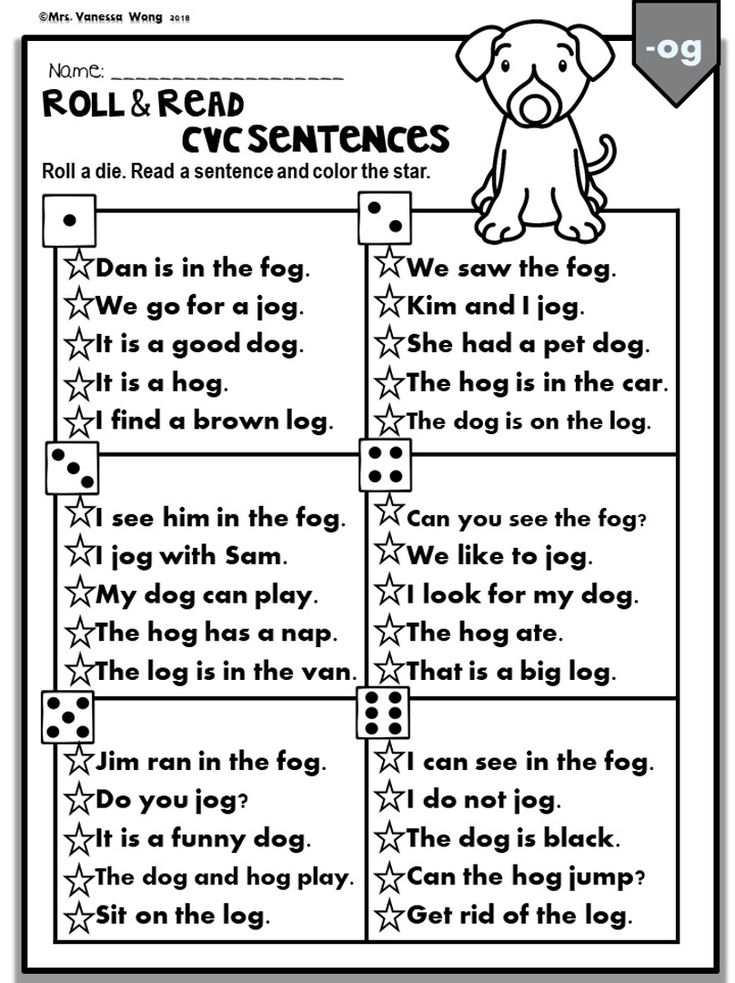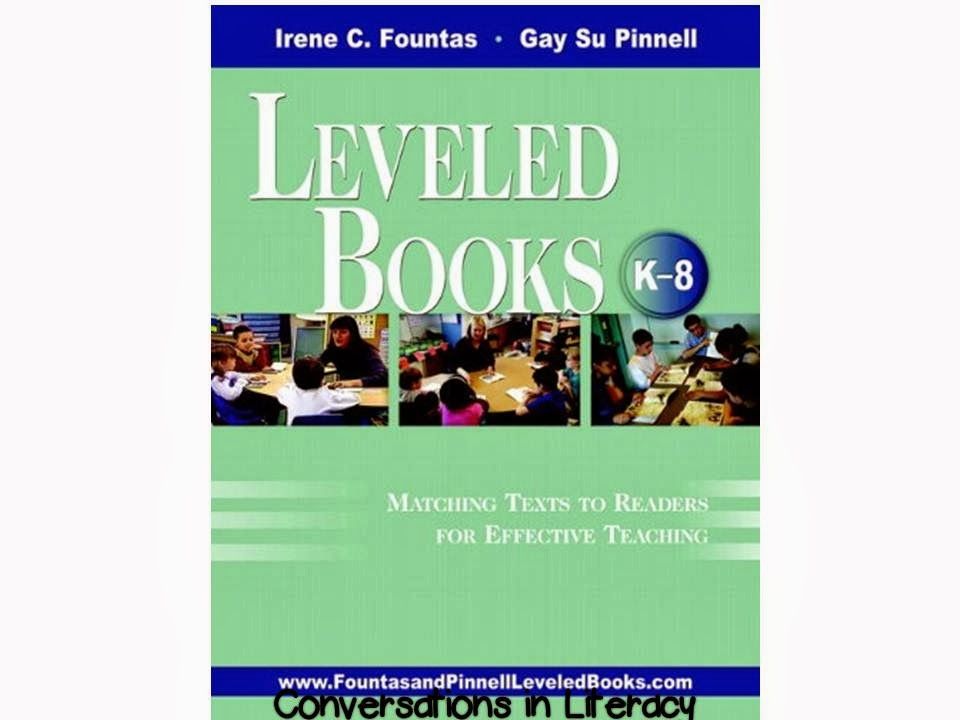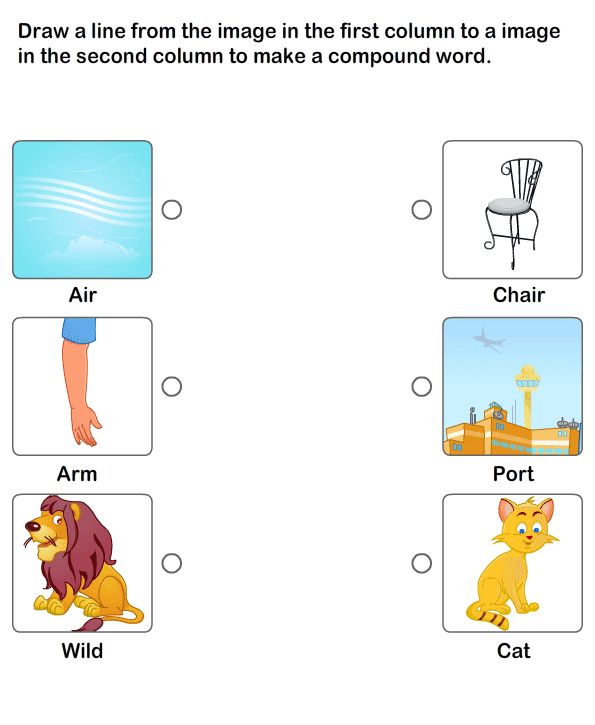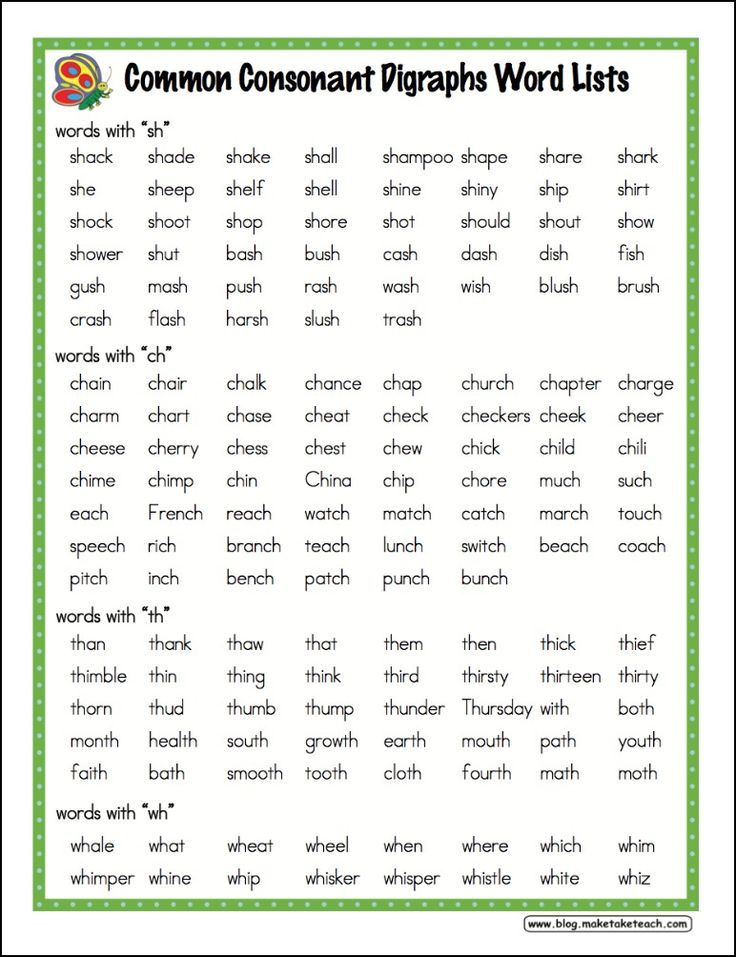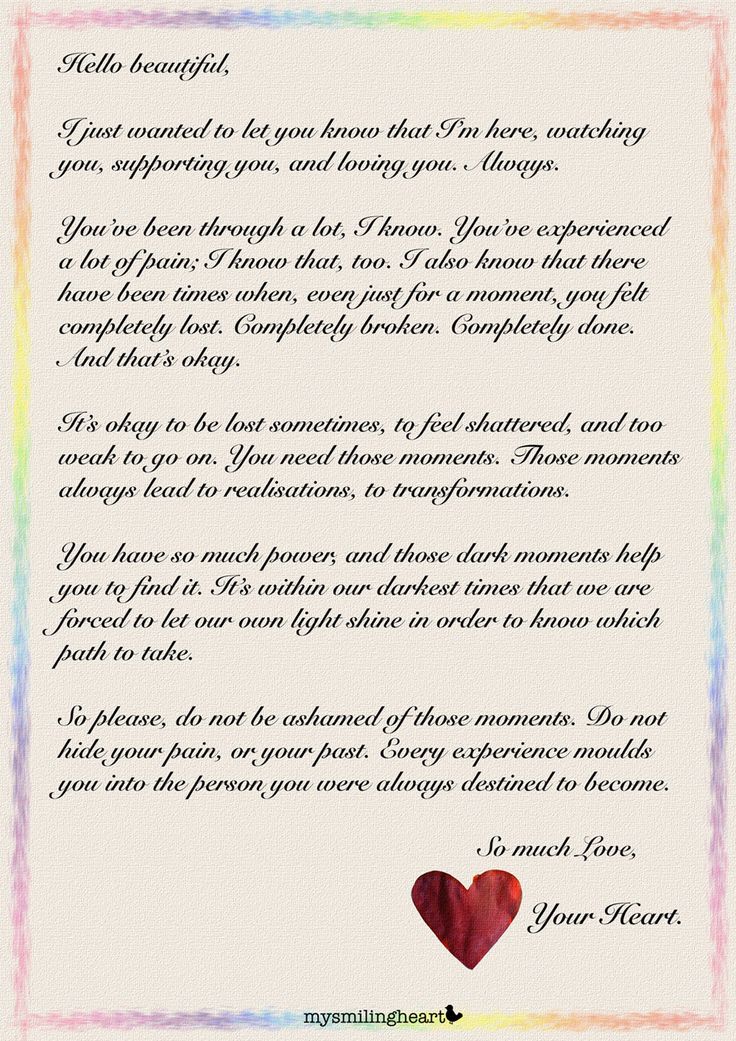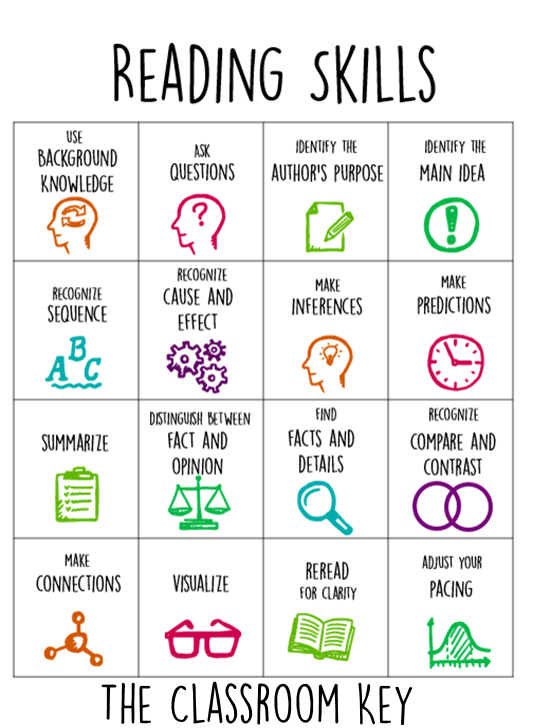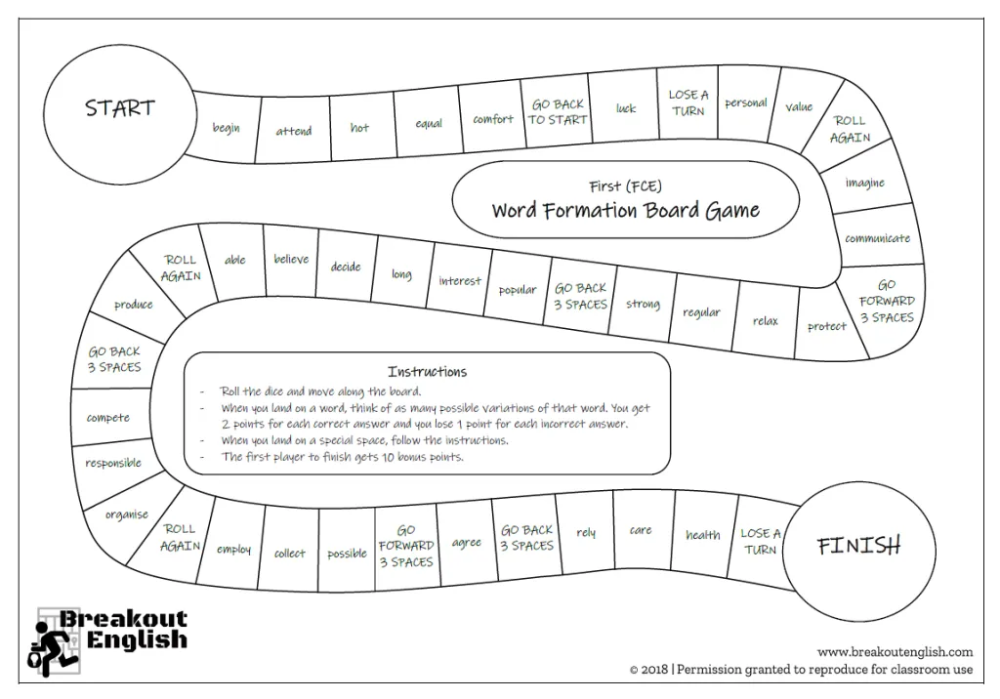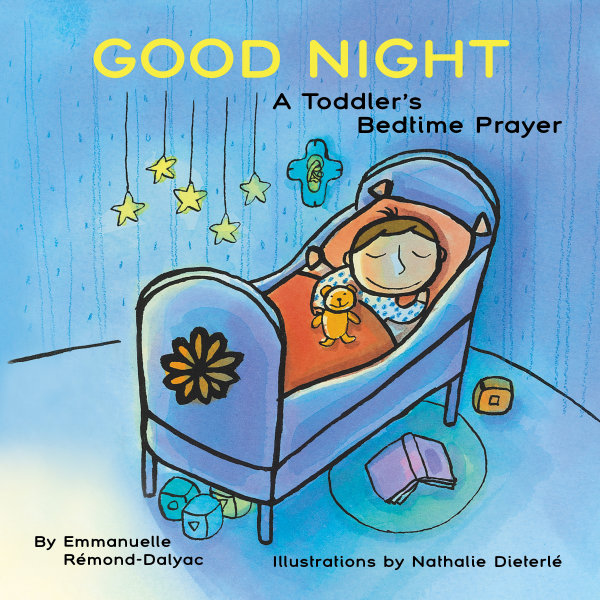Research on teaching sight words
How to Teach Sight Words using a Research-Based Approach
In reading intervention we hear terms like sight words, high-frequency words, phonetically irregular words, red words, heart words, and so many other variations used every day. So we are jumping in to explain what these words actually are, and what the research says about how we should be teaching them!
First things first -
What are sight words?
Sight words are words that need to be recognized by “sight” or words that we need to automatically recognize without sounding the word out. Basically, they are words we can read automatically without thinking about them.
Why are sight words important?
Sight words are important because students need to have a certain level of automaticity in order to comprehend what they are reading
. The tricky thing is that students need to be taught a systematic set of rules and patterns to decode words effectively. When students are learning to read, they should be working through a progression of concepts as they’re learning to “sound out” words. We talked more about this progression over here!
However, there are many words that students need to know before they get to that level of progression because they come up so frequently. This is why sight words are also known as high-frequency words. Because they come up so often, it can be helpful to teach students these patterns a little earlier in their instructional journey.
Now that said, we don’t need to have students memorize these words. Instead, we can use a systematic framework and progression to help build a foundation for future learning while also giving students the knowledge they need to be successful at their current level.
There are 7 Steps to a SMARTER Research-Based Instruction Framework (we use the acronym SMARTER to help remember each of the key components!)
1 - Systematic Instruction
Sight words (words that need to be learned by sight) can be taught systematically
When we are thinking about teaching words that need to become sight words, we want to focus on high-frequency words (words that occur frequently). We can divide those high-frequency words into two categories.
1 - Are they phonetically regular? (Can they be sounded out?)
or
2 - Are they phonetically irregular? (Is there one or more sound patterns that cannot be sounded out even after students have progressed through a systematic phonics progression?)
Once we have sorted our sight words or high-frequency words into those two groups, we have one more question to consider.
3 - If the word is phonetically regular (able to be sounded out effectively), does the student have all the foundational knowledge of each letter pattern in order to read it? For example, the word “them” is phonetically regular and can be sounded out effectively as /th/ /e/ /m/, however, if a student hasn’t learned that TH says /th/ it is a pattern that will be decodable but is not yet.
What does decodable mean?
A decodable word is a word that can be sounded out with a student’s current level of knowledge.
So for example, if a student has learned that U says /u/ and S says /s/ the word “us” is decodable. In the example provided above, the word “them” will be decodable as soon as a student learns that TH says /th/.
Or, if we consider the word “bird” bird is decodable if students know that “IR” says /r/.
In this case, students would need to be familiar with the R-controlled syllable type but as soon as they are familiar with that pattern the word becomes decodable.
However, some words are not fully decodable. Words like “was” and “of” have at least one letter that doesn’t make a predicted sound pattern. These words that are not fully decodable are sometimes known as “heart words” or “red words” because at least part of the word needs to be memorized in order to sound it out effectively.
Notice I mentioned PART of the word needs to be memorized. The great news here is that usually, the entire word doesn’t need to be memorized.
So how exactly do we teach these words?
We use a “Lock Word Strategy” to teach high-frequency words (words that should become sight words). Essentially, these words need to be “locked” into our memory so that we can identify them by sight instead of needing to rely on a phonetic decoding strategy.
In order to help students retain or hold onto sight words, we break them into three different LOCK categories.
1 - Decodable words = Green Lock Words. These words are decodable which means they can be entirely sounded out with a student’s current level of knowledge about how to decode/sound out words. However, these words are high-frequency meaning they occur a lot so we want to “lock” them into our brains so that we can read them quickly, without having to labor over decoding them. We’re looking to build automaticity and reduce the cognitive demand required of sounding these words out.
You can grab a copy of these word cards along with some of our other favorite “lock word” resources here!
2 - Phonetically Regular (Will be Decodable) = Yellow Lock Words. These words are phonetically regular and could be sounded out, but not all of the patterns have been explicitly taught to the student. These often appear in high-frequency words. Again, they need to be “locked” into our memory since the patterns aren’t yet familiar AND we see them often. For example, in the word “go” students may not have learned about open syllables which means they may not know that O makes the long sound at the end of an open syllable, or in the word “you” they may not have learned that “ou” says /oo/. Therefore, once the student learns about open syllables and the vowel team “ou” the word could be sounded out effectively - but students need to be able to read these words before they may have reached this level of systematic exposure we talk about here.
3 - Phonetically Irregular Words = Red Lock Words. These words are tricky because they have at least one pattern that can’t be sounded out. We have to “lock” these patterns in our memory because they don’t follow our typical rules. For example, in the word “is” students need to recognize that S says /z/ which is unexpected because normally S says /s/ unless it is stuck between two vowels. We definitely want our young students to memorize this rule for the word “as” as well so we don’t have an uncomfortable moment in the classroom! (We’ve all been there!) For the word the, we have a Red Lock Word because the e says /u/, and depending on the scope and sequence if students hadn’t yet learned the /th/ pattern - we would want to make sure to explain to our students that TH comes together to say /th/ in this word which is why the letters “th” only have one dot under them.
By breaking our words down into these three categories, we are able to help students “decode” these high-frequency words effectively until they’ve been transitioned into memory. This helps them bucket these skills and see the bigger picture, instead of trying to just memorize hundreds of words.
Again, you can grab a copy of these word cards along with some of our other favorite “lock word” resources here!
2 - Multisensory Instruction
SIght word instruction should be multisensory
The first way we accomplish this is by providing the color-coding and lock symbol which immediately ties in an additional visual to help students with retention. Additionally, we want to think about ways we can add in auditory, tactile, and kinesthetic strategies wherever possible.
When practicing sight words we want to have students practice saying the letter name and not the letter sound since many patterns are irregular. For example, when practicing the word “what” a student would say W - H - A - T says what. Using foam glitter paper is an awesome way to practice! Additionally, having students practice writing over a tactile surface like a grid and then using their finger to practice tracing the word is another way to get in some extra tactile practice.
3 - Applied Instruction
Sight word instruction should be progressive!
Reading and spelling lock words in isolation is definitely the first step, however, if we want our students to become fluent readers and writers we NEED to help them apply their knowledge when reading and in their writing!
You want to start by helping students identify (read) words on their own efficiently. Typically to be considered a mastered sight word students need to be able to identify what the word says in about one second. But reading sight words in isolation (all by themselves) isn’t enough. Once they can read the word you want to make sure they’re reading the word appropriately in context or in connected text. Just practicing sight word flashcards doesn’t mean students are applying that knowledge to their sentence-level reading so it’s critical we help them make that jump.
You want to start by having students recognize and read the word automatically, you then want them to be able to recognize and read the word in the context of a sentence without sounding it out. The spelling of these words typically takes significantly longer, and that’s okay - just be aware the development of sight word automaticity in reading will happen much earlier than a student’s ability to spell the word.
4 - Research Behind Sight Word Instruction
Much of the research that had been done regarding sight word instruction using pure memorization techniques is surprisingly dated.
Many of us in the field of education have heard about Dolch words or Fry words which are lists of words that are taught to students in primary levels. Dolch words were created in the 1930s by Edward Dolch, a professor and children’s book writer who researched words and created a list of 220 of the most common words used in children’s books during that time. Edward Fry expanded upon this list adding hundreds more words to a “sight word list” or a list of words students should know by sight that was last updated in 1980. Dolch’s words were specific to younger students in Kindergarten through 2nd grade where as Fry’s words were meant to be studied by older students in 3rd - 9th grade.
According to the National Institute of Child Health in the National Reading Panel Report conducted in 2000, the recommended approach is combining explicit phonics instruction with either the Dolch or Fry list of sight words. This combination helps students build fluency quickly by providing a base of words they recognize on sight along with a method for decoding unfamiliar words.
Now the challenge with many of these words is that they are phonetically irregular or have parts of the word that cannot be sounded out and need to be memorized. We can help support this process by providing visuals or explaining the etymology (origin of the word and meaning) and morphology (parts of a word carrying meaning).
According to a study completed by Devonshire, Morris, & Fluck, (2013) adding instruction in morphology and etymology increased student retention of words above and beyond traditional phonics. This is especially important when traditional phonics patterns don’t apply.
5 - Targeted Instruction
Your instruction should target the words that your students need to know!
When teaching high-frequency words, we want to make sure the words we are teaching are actually important in instruction.
By putting together word lists based on frequency and common words at different grade levels you can then determine which words students need to know.
Ideally, students who aren’t struggling readers should be provided screeners to make sure they’re recognizing these common words by sight.
If you’re working in smaller groups or 1:1 you can use similar screeners to see which words to focus on with your students.
We also want to think about how many new “lock” words a student can learn at a time. Some students can read up to 5 per week, others do better with only 1-2 new words per week. If you have students who are struggling to learn these words, we recommend starting with the phonetically regular, high-frequency words (green lock words) first.
You can grab our sight word/high-frequency words card deck here!
6 - Explicit Instruction
The biggest hallmark of research-based instruction is that the instruction must be taught explicitly, meaning that we don’t assume students have prior knowledge of foundational reading and spelling concepts just because of their age or reading/spelling ability.
We should be using explicit phonics instruction to teach these words wherever possible. When explicit phonics instruction doesn’t work, we want to give students as much information and practice as possible to be successful with these high-frequency words.
One helpful strategy is combining words or grouping words into categories such as homophones.
Homophones
Visual cues like the examples below are a great support to help students solidify their understanding of these words. Again, many of these patterns are phonetically irregular and need to be memorized as a “red lock word.”
We can also explain complex words in terms of etymology.
We don’t always dig this far into the weeds but for students who can access a higher-level explanation, you can also teach them about the etymology of the words and why they are spelled the way that they are.
Etymology
Explicit sight Word Skills to Support Reading & Spelling
As you work through your lock word (or any variation of lock words, sight words, red words, or heart words) instruction, we suggest starting by explicitly teaching students how to approach the word. Teach them what sounds are phonetically regular and familiar, phonetically regular but still unfamiliar to them, and phonetically irregular. Then, move on to homophones.
As for the etymology - we need to be realistic here (which brings us to our seventh and final step).
7 - Realistic Instruction
Is etymology really that important?
When it comes to our lock words - etymology can be helpful in understanding why certain words “break the rules.” However, we need to be realistic about the amount of information our students can access and how much they actually need to be functional readers and writers.
It will always be more important that students can read and spell the word muscle, than knowing that it comes from a Latin term meaning “little mouse.” If etymology feels out of reach for your students - then don’t worry about it. If it doesn’t contribute to them having a functional ability to read and spell, it isn’t going to be worth your time or their time in the long run.
In addition to being realistic with our students, you also need to be realistic with yourself.
Do what you can, with what you have, where you are.
Now obviously there is A LOT that goes into research-based instruction, including lock words, but again, it does not have to be difficult. One of the best things you can do is to start thinking about where you can incorporate these activities into what you’re already doing. The best instruction is the instruction you can actually deliver and keep up with, without burning yourself out!!!
If you want to grab a comprehensive set of lock words that we use with our students you can check out the High-Frequency Word Deck using the button below!
Check out our High-Frequency Word Deck here!
How To, Sight Words & Red Words, SMARTER FrameworkCorey Pollard2 Comments
0 LikesTeaching Sight Words as a Part of Comprehensive Reading Instruction
Best taught in brief-but-frequent sessions with feedback, the ability to automatically recognize sight words can help students focus efforts on decoding and understand text more fully.
Educational Support Leader, Dubuque Community School District
Professor and Director, Tennessee Reading Research Center
Word recognition plays an important role in learning to read. Although not a substitute for the critical skill of being able to decode unfamiliar words (referred to as word identification), recognizing some words automatically, or on sight, contributes to reading effortlessly and with understanding (McArthur et al., 2015). Words that can be recognized this way by a reader are known as sight words. Learning certain kinds of sight words enables children to devote their energy to decoding words that are more difficult.
What Are Sight Words?
There are two types of sight words. The first type includes decodable words that frequently occur in printed English (e.g., “and,” “like,” “get”). These high frequency words can be read by sounding them out, but they appear so often in text that learning to read them on sight will increase children’s reading fluency (Joseph, Nation, & Liversedge, 2013). Moreover, these words can provide a student access to connected text in advance of learning the phonics principles otherwise necessary for decoding them (Ehri, 2014).
The other type of sight words cannot be decoded because they do not follow the typical letter-sound correspondences (e.g., “have,” “there,” “of”). These are irregular words and because they cannot be identified, they must be recognized automatically.
What Sight Words Should Be Taught?
Several research-based lists of sight words are available for teachers to use when planning instruction or for families to use when working with their children at home. One of the most popular lists is Edward Dolch’s (1936) list of 220 basic sight words. Commonly referred to as the Dolch words, this list was developed as an alternative to longer sight word lists of 500 or more words. To be included on the list, a word had to appear on all three popular word lists of the early 1900s:
- The Child Study Committee of the International Kindergarten Union’s (1928) list of 2,596 words
- The Gates (1926) list of vocabulary for primary grade children
- Wheeler and Howell’s (1930) list of 453 words most frequently used in beginning readers published from 1922 to 1929.
The final Dolch list excluded all nouns, which are concrete and easily referenced in illustrations, and included an additional 27 words not found on the three lists mentioned above. Dolch cautioned that his list of words did not include all the sight words children might need to learn in the elementary grades, but the words represented the minimum that children should be able to read automatically.
Another popular list of sight words is Edward Fry’s (2000) 1000 Instant Words. Fry’s list differs from Dolch’s (1936) in a few key ways. First, Fry’s list has been revised several times. What originally began as a list of 1000 words (Fry, 1957) was condensed to a list of 300 words (Fry, 1980) and, most recently, reintroduced as a modified list of 1000 words (Fry, 2000). In comparison, the Dolch words have not been updated since they were first introduced. Second, the longer list compiled by Fry is broader in scope. Among the resources used to develop the Fry list were the Dolch words and The American Heritage Word Frequency Book (Carroll, Davies, & Richman, 1971). As a result, the Fry list includes nearly all of the Dolch Words, with 19 exceptions:
| an | ate | call | drink | eight | funny | goes | going | he | here |
| hurt | its | long | myself | own | round | she | thank | up |
The other words contained on Fry’s (2000) list represent the most common words in the English language organized in groups of 100. Fry suggested that his list of 1000 Instant Words be used as part of the comprehensive literacy instruction provided to beginning readers in elementary school as well as struggling readers in middle and high school.
How to Teach Sight Words
Now that you know about some of the validated sight word lists, there are several research-based recommendations to remember when teaching sight words (e. g., Ayala & O’Connor, 2013; January, Lovelace, Foster, & Ardoin, 2017). Lists ordered by frequency provide guidance for teachers and families in considering which generally are the highest priority for instruction. However, the words that children are about to encounter in a book should be considered alongside the sight word lists. For young children, choose one or two sight words from the book that appear in the first 100 on the list. Older children may be able to learn five to seven sight words from the book at a time, and those words should gradually be lower on the list of frequency. The following are additional tips for teaching sight words:
- Introduce new sight words in isolation (i.e., the sight word by itself), but immediately follow this with repeated exposures to the same sight words in books and other text materials.
- Do not introduce two sight words that are similar or easily confused at the same time. For instance, “will” and “well” should be introduced in separate lessons as should “on” and “no.
”
- Provide brief (i.e., less than 10 minutes per session) but frequent sight word instruction, especially for beginning and struggling readers.
- Offer students numerous opportunities to practice and receive immediate, specific feedback. For example, if a child reads the word “this” correctly, respond with positive feedback: “Yes! The word is this.” If a child read “this” incorrectly, respond with corrective feedback: “The word is this. Say the word this.”
Immediately encountering the words in a book provides an opportunity to practice reading them, but building the ability to read them with automaticity, or effortlessly upon sight, will take repeated practice. If a child is struggling to remember previously introduced sight words, continue practicing with those before adding new sight words. Finally, it is important to remember that sight word instruction is only one part of a comprehensive reading lesson and must be accompanied by instruction in phonics (Ehri, 2014).
Reading Racetrack: One Research-Based Sight Word Strategy
One research-based sight word activity to use as part of sight word instruction is the reading racetrack (Rinaldi, Sells, & McLaughlin, 1997; Sullivan, Konrad, Joseph, & Luu, 2013). Although implemented one-on-one in the Sullivan et al. study, the reading racetrack strategy has been modified here (see Supplemental Materials for Teachers below to access this resource) for implementation in peer pairs and small groups. Initially, a set of sight words is taught with feedback, and then the racetrack activity provides students practice with the sight words to build automaticity. Children read as many of the sight words as they can in 1 minute. The instructor then forms small groups of students who made similar errors, and provides direct instruction to each group. Children then practice reading the sight words again and graph their results.
Part of the Bigger Reading Picture
Given the need to recognize high frequency and irregular words automatically, sight word instruction remains one component of a comprehensive literacy program for early readers and, for older students experiencing reading difficulties, a part of reading intervention. To prevent students from becoming reliant on the ineffective practice of memorizing lists of words, the instruction should be delivered in small doses (i.e., less than 10 minutes) and occur alongside systematic phonics instruction. The sight words themselves should be drawn from research-based lists and be applied immediately to reading connected text. It is important to remember that sight word drills are not the route to skilled reading ability. Rather, most words become sight words when a reader is able to efficiently process the sound-symbol correspondences of the printed forms (Ehri, 2014). When implementing effective reading instruction, only a small set of words need be taught as sight words. Reading most words should be an effortless act.
Supplemental Materials for Teachers
Reading Racetrack Sight Word Activity
Teach sight word recognition using this exercise that involves multiple rounds of instruction and practice.
References
Ayala, S. M., & O'Connor, R. (2013). The effects of video self‐modeling on the decoding skills of children at risk for reading disabilities. Learning Disabilities Research & Practice, 28, 142-154. doi:10.1111/ldrp.12012
Carroll, J. B., Davies, P., & Richman, B. (1971). The American Heritage word frequency book. New York, NY: American Heritage Publishing Co.
Child Study Committee of the International Kindergarten Union. (1928). A study of the vocabulary of children before entering the first grade. Washington: International Kindergarten Union.
Dolch, E. W. (1936). A basic sight vocabulary. The Elementary School Journal, 36, 456-460. doi:10.1086/457353
Ehri, L. C. (2014). Orthographic mapping in the acquisition of sight word reading, spelling memory, and vocabulary learning. Scientific Studies of Reading, 18, 5-21. doi:10.1080/10888438.2013.819356
Fry, E. (1957). Developing a word list for remedial reading. Elementary English, 34, 456-458. Retrieved from http://www.jstor.org/stable/41384648
Fry, E. (1980). The new instant word list. The Reading Teacher, 34, 284-289. Retrieved from http://www.jstor.org/stable/20195230
Fry, E. (2000). 1000 instant words: The most common words for teaching reading, writing, and spelling. Westminster, CA: Teacher Created Resources.
Gates, A. I. (1926). A reading vocabulary for the primary grades. New York, NY: Teachers College, Columbia University.
January, S. A. A., Lovelace, M. E., Foster, T. E., & Ardoin, S. P. (2017). A comparison of two flashcard interventions for teaching sight words to early readers. Journal of Behavioral Education, 26, 151-168. doi:10.1007/s10864-016-9263-2
Joseph, H. L., Nation, K., & Liversedge, S. P. (2013). Using eye movements to investigate word frequency effects in children's sentence reading. School Psychology Review, 42, 207-222. doi:10.1016/j.visres. 2015.05.008
McArthur, G., Castles, A., Kohnen, S., Larsen, L., Jones, K., Anandakumar, T., & Banales, E. (2015). Sight word and phonics training in children with dyslexia. Journal of Learning Disabilities, 48, 391-407. doi:10.1177/0022219413504996
Rinaldi, L., Sells, D., & McLaughlin, T. F. (1997). The effect of reading racetracks on the sight word acquisition and fluency of elementary students. Journal of Behavioral Education, 7, 219-233. doi:10.1023/A:1022845209417
Sullivan, M., Konrad, M., Joseph, L. M., & Luu, K. C. (2013). A comparison of two sight word reading fluency drill formats. Preventing School Failure: Alternative Education for Children and Youth, 57, 102-110. doi:10.1080/1045988x.2012.674575
Wheeler, H. E., & Howell, E. A. (1930). A first grade vocabulary study. The Elementary School Journal, 31, 52-60. doi:10.1086/456516
Features of establishing eye contact in the process of studying at a university
Annotation. Due to the current situation of the COVID-19 pandemic, it became necessary to carry out the learning process online at a distance. In the process of interaction organized in this way, the problem of the lack of a direct direct look between the participants in communication comes to the fore. To identify the features of establishing eye contact between students and a teacher in the process of traditional and distance online learning, a questionnaire was developed, the analysis of which made it possible to draw a number of conclusions about its importance and the difficulties that arise in its establishment.
Key words: COVID-19 pandemic, eye contact, eye contact, non-verbal communication, traditional learning; distance learning.
In connection with the search for new opportunities and ways of influencing a person in various fields and spheres of activity, studies of numerous aspects of the manifestations of non-verbal communication, in particular, eye contact, have not lost their relevance today [2, 5, 6]. At present, eye contact is the object of study of foreign and domestic scientists - psychologists, linguists, sociologists, physicians, etc. [8, 9, 10]. The importance of studying eye contact is necessary to increase knowledge about its hidden possibilities, including at the level of interpersonal interaction, to increase the efficiency and productivity of human activity.
Eye contact is a form of non-verbal communication and includes such important functions as regulative, emotive, cognitive and controlling. The establishment and maintenance of eye contact, first of all, is influenced by the distance and personal characteristics of a person, indirectly by physical and gender characteristics [3]. Eye contact plays an important psychological role in the formation of trust and rapprochement with the interlocutor [1].
In the current situation, during the COVID-19 pandemic, it became necessary to carry out the learning process online at a distance. In the process of interaction organized in this way, the problem of the lack of a direct direct look between the participants of communication comes to the fore [4, 7]. Therefore, it is very important to pay attention to the study of the features of establishing eye contact between a student and a teacher in the learning process in order to assess the effectiveness of the methods and forms of teaching students used in traditional and distance learning.
To clarify the features of establishing eye contact, it is necessary to distinguish between traditional classroom work in person and remote work online.
Through non-verbal behavior, a psychological connection between students and the teacher is established, which makes it possible to increase the efficiency of mastering educational material and, consequently, achieve high learning outcomes. This process is also important for the teacher in terms of obtaining a non-verbal feedback from students, and not only positive. The influence of non-verbal behaviors, expressed in the expression of trust and responsiveness in the classroom, is even more important for the success of distance learning.
The purpose of the study is to develop a questionnaire to identify the specifics of establishing and maintaining eye contact as a form of non-verbal communication of a student in the process of traditional and distance online learning.
The hypothesis of the study is that, regardless of the form of learning, eye contact is important for successful interaction between the teacher and students, but it has specific features. This conclusion can be reached by analyzing different forms of interaction - a lecture in a traditional classroom form, a lecture on an online platform and a video call from a student to a teacher.
To confirm the theoretical provisions, we used the traditional method of surveying a student audience - a questionnaire, which has a number of advantages, such as a direct method of obtaining information from the subject, accessibility and ease of use, speed, convenient method of distribution and automatic processing of results.
During the COVID-19 pandemic (April 2020), a remote survey was conducted, in which students of the Faculty of Psychology of Moscow State University named after M. V. Lomonosov, second-year students in the specialization "Clinical Psychology" and "Psychology of Service Activities". The survey was sent to 60 potential participants. Participation in the study was voluntary. 26 students took part, including 23 females (88.5%) and three males (11.5%). The average age of the subjects was 19-21 years old. The sample is limited due to the pandemic conditions in which the survey was conducted.
The object of the research is traditional and distance learning. The subject is eye contact between the teacher and the student in the learning process. The methodology is based on the use of the data collection method, the survey method and the analysis method.
We have developed a questionnaire that includes a block of general questions aimed at collecting data (gender, course), a block of questions directly on the research topic, which contains five sub-blocks: establishing eye contact during a lesson in a traditional form, remotely during a lesson on an online platform and in a situation of a video call with a teacher), comparison of eye contact in different forms of learning, an overall assessment of its importance.
In the first sub-block, students were asked to answer five questions about establishing eye contact during a traditional lesson, assess its importance and duration, and write down the difficulties encountered. In the second subblock, students were asked to answer three questions related to establishing eye contact during an online lecture at a distance, evaluate it, and indicate the average duration. It is important to note that the average duration was estimated by the subjects in seconds, but converted to minutes. In the third subblock, it was necessary to respond only to students who had a situation of communicating with a teacher “eye to eye”, for example, via video call. Four questions were asked to determine whether the attempt to establish eye contact was successful, what difficulties arose, and it was also necessary to indicate the approximate duration. The fourth sub-block included two questions aimed at comparing eye contact in real life and during online communication. Respondents needed to evaluate in what situation it is easier for them to establish eye contact and justify their point of view. The fifth sub-block, consisting of two questions, was aimed at an overall assessment of the importance of eye contact. Thus, the content of the questionnaire is focused on collecting information to obtain specific data necessary to confirm the research hypothesis put forward by us.
An analysis of the data obtained during the questionnaire suggests that the majority of respondents (46.2%) in the traditional form of education tend to make eye contact with the teacher three to five times during a lecture/seminar. Whereas, 11.5% rarely make eye contact - less than three times per session. It should be noted that a little less than half of the students (42.3%) often (more than five times) make eye contact with the teacher. 92.3% of respondents, when making eye contact, try to maintain it, while 7.7% do not.
Therefore, we can conclude that students tend to establish and maintain eye contact with the teacher in the traditional form of education. In particular, for 69.2% of respondents, eye contact helps to better perceive information, while for 30.8% it seems to be an ineffective means.
Next, the respondents had to approximately indicate the duration of one eye contact with the teacher in the traditional form of teaching. The answers were distributed as follows: 7 respondents indicated 1 second, 4 respondents abstained from answering the question, 5 respondents indicated 2 seconds, 3 respondents - 3 seconds, and the same number of respondents - 5 seconds, also 0.2 was indicated as single answers ; 0.25; 1.5; 6; 7 seconds. Thus, the average time was 1.7 seconds.
When clarifying the difficulties that arise when establishing eye contact with a teacher in the process of traditional learning, students noted a number of problems of a personal and spatio-temporal nature. Personal reasons include problems related directly to the student himself, with his perception and awareness of contact and personal qualities (embarrassment, the occurrence of discomfort, in particular, the student's feeling of "highlighting" his personality by the teacher, the need for the student to clearly control the manifestation of his emotions, complete concentration on the material). Moreover, personal reasons are manifested not only on the part of students, but also, which is no less important, on the part of the teacher, for example, switching the teacher's gaze to another student. The spatio-temporal reasons include the range of the distance and the duration in time. No less important are the causes of a physiological nature, such as dry eyes, poor vision.
This was followed by a set of questions regarding the current situation of online distance learning related to the COVID-19 pandemic.
We found that 42.3% of respondents try to catch the teacher's eye while listening to an online lecture, while 57.7% do not. At the same time, it is more difficult for 30.8% of respondents to perceive a teacher when teaching online, while 69.2% do not have any difficulties.
The majority of students indicated 1 minute (42.5%) as the average duration of looking at the teacher. An equal number of respondents (9.5%) answered 5 and 10 minutes. As single answers, we received - 0. 3; 6; 1.5; 2 minutes. 19% of respondents answered that they do not look into the eyes of the teacher, as they are focused on the presentation and perceive the teacher by ear, sometimes glancing at him. Overall, students try to look at the teacher for an average of 1.87 minutes.
This was followed by a block question intended for those respondents who had a situation of personal communication with the teacher, for example, a video call. The number of respondents answering this block of questions was 16 people. These were students who worked with the teacher on an individual basis.
When talking with a teacher, 87.5% of the students we interviewed looked the teacher in the eyes, and only 56.3% of them believe that they made eye contact with the teacher during the conversation.
Half of the respondents had difficulty making eye contact. The main reason students singled out was the different level of the camera and the direction of the teacher's gaze, that is, in order to establish eye contact, students and teachers needed to look at the camera, and not into the eyes of the interlocutor. Also, among the possible reasons, the students highlighted the poor quality of video communication and concentration on obtaining information.
The majority of students indicated 2 and 5 seconds (16.7%) as an average duration, as single answers were received - not established; 0.3; 0.5; 1; 4; 10; 12; 2.5. The average duration was 2.76 seconds. Note that the average duration is 1 second longer in the video call situation than in the classroom situation. This is due to the fact that the teacher communicates with only one student, is focused on him and he does not need to switch his attention to other students.
82.4% of respondents believe that it is easier for them to establish eye contact in a situation of direct communication with a teacher, while 17.6%, on the contrary, in an online communication situation. The variants of the received arguments are interesting:
- less tension is felt;
- greater sense of interaction;
- there are no problems with understanding where to look;
- no technical problems.
There were also responses from students who did not notice the difference between traditional and remote communication, perceiving it as "live" communication and establishing eye contact without problems. They justified this by saying that they also see the face and eyes, recognize emotions and understand the reaction of a person.
The group of students who adhere to the fact that it is easier for them to establish eye contact in a situation of online communication in our study amounted to 17.6%. As arguments, they pointed out that in a situation of traditional communication they experience a feeling of excitement and embarrassment, while in a situation of online communication they do not have this and, thus, it is easier for them to establish eye contact. Thus, we can argue that students who experience certain psychological "obstacles" find it easier to make eye contact with the teacher in an online distance learning situation, as they feel more confident.
When assessing the importance of making eye contact on a scale of 1 to 5 (meaning "not important" to the highest of 5 - "very important"), the following results were obtained. Most of the respondents (54.2%) marked 4 points on the scale, an equal number of respondents (20.8% each) marked neutral and the highest mark on the scale. One respondent (4.2%) noted that he did not care at all. The following answers were received as arguments for the importance of establishing eye contact with the teacher:
- eye contact contributes to a better perception of the teacher's emotions and feelings, which allows the student to "adjust" to him, become recognizable, choose the right words, and in some cases predict the answer to the question;
- increases concentration, helps to better perceive, understand and assimilate information;
- serves as feedback, that is, it helps the teacher to make sure that the student is listening, showing interest, involvement and concentration, and also serves as an indicator for the teacher as an indicator of the degree of agreement and unity;
- contributes to the establishment of psychological contact, the interacting people are much more perceived as individuals, seek location;
- acts as a substitute for the desire and permission to answer the question.
Respondents who gave an average rating talk about the importance of establishing eye contact depending on the situation, explaining their position by saying that “if you just listen to the teacher and watch him, then eye contact is not important at all, but in a situation of answer it is especially important, so how it helps to respond to the reaction of the teacher. Respondents who rated eye contact as an unimportant component in communication justify this by saying that “making eye contact can become a confusing and distracting factor, in which there is a distraction from the essence of what is happening.”
So, the analysis of the data obtained during the survey of the influence of eye contact on the perception of information in the learning process, made it possible to draw a number of important conclusions.
It is important for students, regardless of the format of training, to establish eye contact with the teacher, as it contributes to better assimilation and perception of information, establishing psychological contact between the teacher and the student, and, no less important, serves as a means of feedback.
When perceiving information, most students try to look the teacher in the eye and establish eye contact with him. However, with remote online interaction, students experience, in addition to personal and spatio-temporal difficulties in establishing eye contact, also technical ones (different camera and image levels, different video communication quality), which students cannot always eliminate.
Many students find it easier to make eye contact in face-to-face situations. But for those students who are not very confident, it is easier to establish eye contact in the process of remote online interaction.
For a more complete study of the problem of interaction between students and teachers in the process of distance learning, it is necessary to continue the development of this topic using other methods and techniques.
Distinctive features of the establishment of eye contact during university learning process
Kornilova V.S.
student of 3 course of the Lomonosov Moscow State University, Moscow
Research supervisor:
Dontsov Alexander Ivanovich
Professor, Department of Social Psychology of the Lomonosov Moscow State University, Doctor of Psychological Sciences, Professor
Annotation. Due to the current situation of the COVID-19 pandemic, it became necessary to carry out the distant learning process. In the process of interaction organized in this way, the problem of the absence of a direct look between the participants in communication comes to the fore. To identify the features of establishing eye contact between students and a teacher in the process of traditional and distance online learning, a questionnaire was developed, the analysis of which made it possible to draw a number of conclusions about its importance and the difficulties encountered in its establishment.
Keywords: COVID-19 pandemic, eye contact, visual contact, non-verbal communication, traditional learning; distance learning.
- Averkina L.A. Non-verbal communication is an important aspect of intercultural communication // Bulletin of the Moscow State Linguistic University. 2008. No. 554. S. 123-133.
- Akhyamova I.A. Methodology, theory and practice of forming a culture of non-verbal communication of student youth: monograph.
Yekaterinburg: EASI, 2015. 290 s
- Knapp M., Hall J. Non-verbal communication: facial expressions, gestures, movements, postures and their meaning: full manual.: Per. from English. Z. Zamchuk et al. St. Petersburg: Prime-Evroznak, 2006. 512 p.
- Patrakova G.V. On distance learning in the context of the COVID-19 pandemic // Distance learning: topical issues: collection of materials of the All-Russian Scientific and Practical Conference. Cheboksary, 2020, pp. 18-21.
- Serikov A.E. Eye avoidance practices in Russian culture // Bulletin of the Samara Humanitarian Academy. 2016. No. 1(19). pp. 44-62.
- Shestopalova ND Okulesika as a semantic element in the presentation of direct speech // Bulletin of the Tver State University. 2015. No. 4. S. 189-193.
- Shmurygina O.V. Educational process in a pandemic // Vocational education and labor market. 2020. No. 2 (41). pp. 51-52.
- Binetti N., Tomassini A., Friston K., Bestmann S. Uncoupling Sensation and Perception in Human Time Processing // Journal of Cognitive Neuroscience.
2020 (March). (date of access: 07.08.2020)
- Farroni T., Csibra G., Simion F., Johnson M.H. Eye contact detection in humans from birth // Cognitive Linguistics. 2013. No. 24 (3). pp. 457-481.
- Rogers S.L., Guidetti O., Speelman C., Longmuir M., & Phillips R. Contact Is in the eye of the beholder: The eye contact illusion. perception. Currently in ‘online first’ status. – 2019. (date of access: 08/07/2020).
- Averkina L.A. Non-verbal communication is an important aspect of intercultural communication // Moscow State Linguistic University Bulletin. 2008. No. 554. Page: 123-133.
- Akhyamova I.A. Methodology, theory and practice of forming a culture of non-verbal communication of student youth: monograph. Yekaterinburg, 2015. 290 pages.
- Nepp M., Kholl J. Non-verbal communication: facial expressions, gestures, movements, postures and their meaning: complete guide: translation from English Z. Zamchuk and other. St. Petersburg, 2006.
512 pages.
- Patrakov G.V. Distance learning in the context of the COVID-19 pandemic // Distance learning: topical issues: collection of materials of the All-Russian scientific and practical conference. Cheboksary, 2020. Page: 18-21.
- Serikov A.E. Gaze avoidance practices in Russian culture // Bulletin of the Samara Humanitarian Academy. 2016. No. 1(19). Page: 44-62.
- Shestopalova N.D. Eye contact as sense construction element of direct speech presentation // Bulletin of Tver State University. 2015. No. 4. Page: 189-193.
- Shmurygina O.V. Educational process during pandemic // Vocational education and labor market. 2020. No. 2 (41). Page: 51-52.
- Binetti N., Tomassini A., Friston K., Bestmann S. Uncoupling Sensation and Perception in Human Time Processing // Journal of Cognitive Neuroscience. 2020 (March). (date of the address: 08/07/2020).
- Farroni T., Csibra G., Simion F., Johnson M.H. Eye contact detection in humans from birth // Cognitive Linguistics.
2013. No. 24 (3). Page: 457-481.
- Rogers S.L., Guidetti O., Speelman C., Longmuir M., & Phillips R. Contact Is in the eye of the beholder: The eye contact illusion. perception. Currently in ‘online first’ status. 2019. (date of the address: 07.08.2020).
Research: eye contact with the teacher helps to learn a foreign language - Gazeta.Ru
Science
Scientists have found that eye contact with the teacher plays a huge role in teaching young children a foreign language. More details about the findings of the researchers can be found in the journal Developmental Neuropsychology.
The experiment involved 17 children aged 9.5 months whose parents spoke English. Over the course of four weeks, the children attended twelve 25-minute sessions during which they interacted with a Spanish teacher. The teacher read books to the children and played with them, accompanying his actions with Spanish speech. Scientists recorded how long each child was in eye contact with the teacher, and also followed the direction of the teacher's gaze.
After the end of the "language courses", the researchers tested how well each child learned Spanish - for this, the children listened to English and Spanish words, and the scientists recorded how their brains would react to familiar and unfamiliar combinations of sounds. As a result of the work, it turned out that there is a direct relationship between the duration of the young student's eye contact with the teacher and the effectiveness of learning: the more closely the child looked into the teacher's eyes and followed his gaze, the more Spanish words he memorized. The authors of the study explain the results obtained by the fact that prolonged eye contact indicates a child's increased attention to what is happening during the lesson.
Subscribe to Gazeta.Ru in News, Zen and Telegram.
To report a bug, select the text and press Ctrl+Enter
News
Zen
Telegram
Picture of the day
The bomb could have been in a donated figurine: what is known about the explosion on Vasilyevsky Island
The St. Petersburg Investigative Committee opened a criminal case on murder after the explosion in the cafe where military commander Tatarsky died
Military operation in Ukraine. Day 403
Online broadcast of the military operation in Ukraine — Day 403
"Unexpected decision". How OPEC+ production cuts will affect oil prices
Novak says oil production cuts of 500 bpd have been extended until the end of 2023
Investigative Committee of the Russian Federation published a photo from the place of death of Vladlen Tatarsky
Gryzlov: nuclear weapons moved to the western borders of Belarus
"Strana. ua": an American detonated a grenade in a cafe in Ternopil
Governor of Kursk Starovoit reported the injury of seven people during the mortar shelling of the Armed Forces of Ukraine
News and materials
Office of the President of Ukraine declared non-involvement in the murder of Vladlen Tatarsky
Sarah Ferguson said that Queen Elizabeth II's corgis have recovered from grief after her death
Laima Vaikule performed songs in Russian at a concert in Florence
Astrophysicists have found that solar flares can lead to railroad accidents
Scientists urged to protect moths by planting white flowers
Speaker of the Legislative Assembly Belsky: the murder of Tatarsky is timed to coincide with the anniversary of the terrorist attack in the metro
Solovyov commented on the murder of military correspondent Vladlen Tatarsky and Daria Dugina
Kokorin's goal pass helped Aris achieve a minimal victory in the Cyprus Championship
Scientists compared the effects of masturbation and sex on sleep quality
112: the girl who handed the figurine to Tatarsky is in one of the hospitals in St. Petersburg
Pentagon: SpaceX launched 10 Falcon 9 satellites into space
"Rostov" in the minority beat the worst team RPL
78.ru: 14-year-old girl injured in the explosion is in a state of moderate severity
Anne Hathaway posted a photo in a mini dress from the Versace
advertising campaignInvestigative Committee of the Russian Federation launched an investigation into the case of mockery of the body of a member of the SVO with a katana
Shot: two minutes before the explosion, a girl and two men with backpacks came out of a cafe in St. Petersburg
RBC: the explosion of the figurine is one of the versions of the death of military commander Tatarsky
Tatarsky's colleagues promised to help his family
All news
"His fate will be determined by the court. " The Russian Foreign Ministry responded to the demand of the State Department to release Gershkovich
Lavrov discussed with Blinken the detention of American journalist WSJ Gershkovich in Russia
"The stakes are very high": the West spoke about the consequences of the failure of the offensive of the Armed Forces of Ukraine
AP: if Kyiv does not make progress on the battlefield with Western weapons, he will lose the support of partners
"Records from Ward #6". Kiev's plan to rename Sevastopol was appraised in Crimea 16:27
Tetris: British-American film with Nikita Efremov about the creation of the cult game
Review of the film Tetris with Nikita Efremov from the author of The Dirt
Frozen Earth, Citadel, Fatal Attraction, Gnawing and 13 more TV shows in April
Which TV shows to watch in April 2023: Gazeta. Ru's choice
"Put the weapon away!" What is known about the attack of two men on teenagers in a St. Petersburg shopping center
A student beaten by drunken men in a St. Petersburg shopping center told the details of the fight
An explosion in a cafe in the center of St. Petersburg. First shots
"Bone across the throat." US, EU and Ukraine outraged by Russia's chairmanship of the UN Security Council
What conclusions should Russia draw from NATO operations
Expert Khodarenok told what lessons Russia should learn from operations in Iraq and Yugoslavia
My husband thinks that my orgasm is not his concern
An accountant from Voronezh talks about problems in his second marriage
Quiz: Guess the Russian series based on the meme from it
We suggest recalling your favorite series and TV shows from the 2000-2010s, which were sorted into memes
Mysterious autism.

